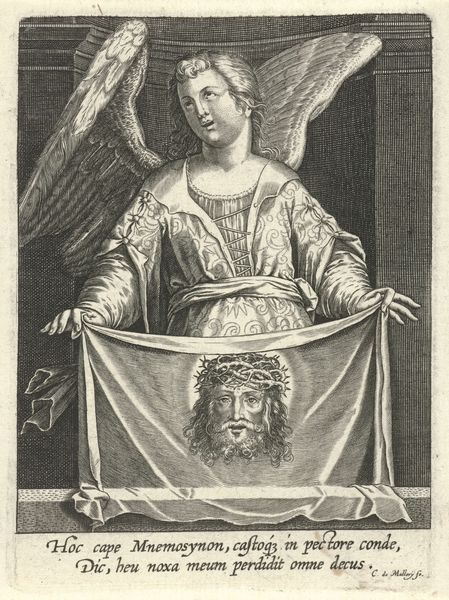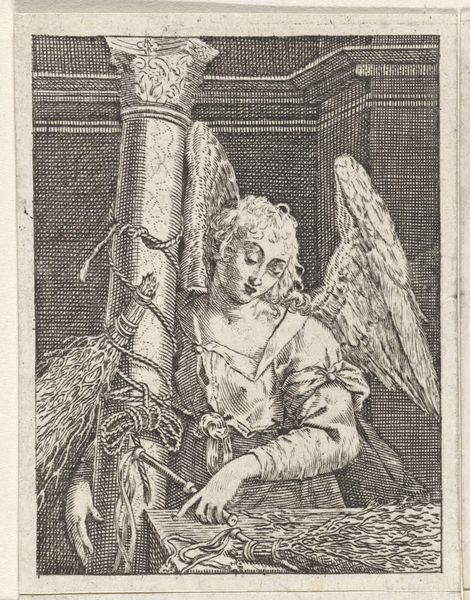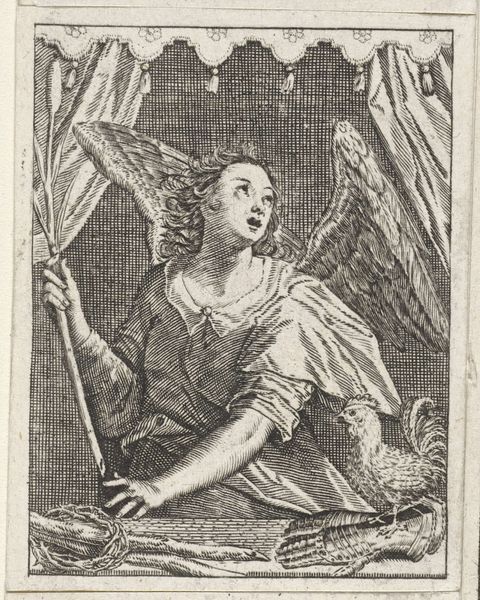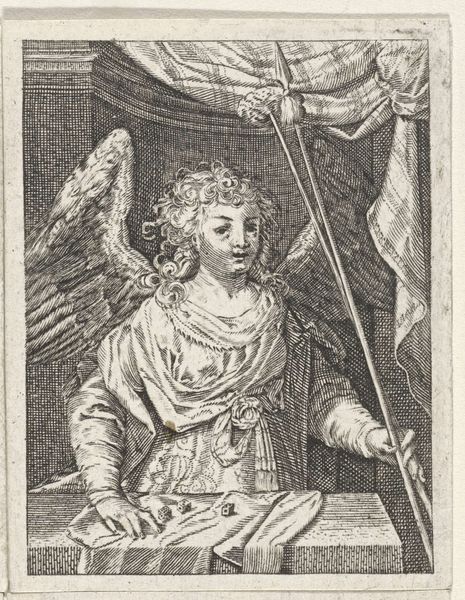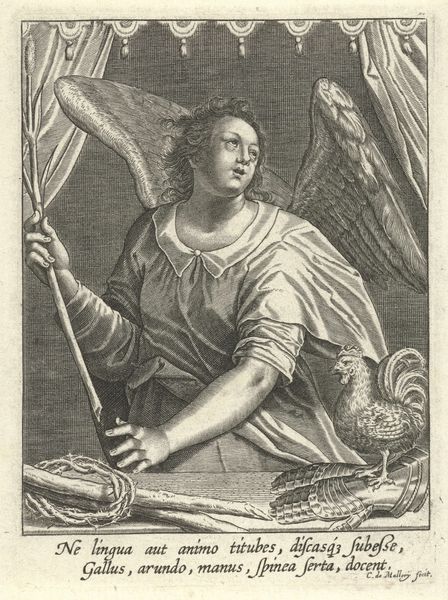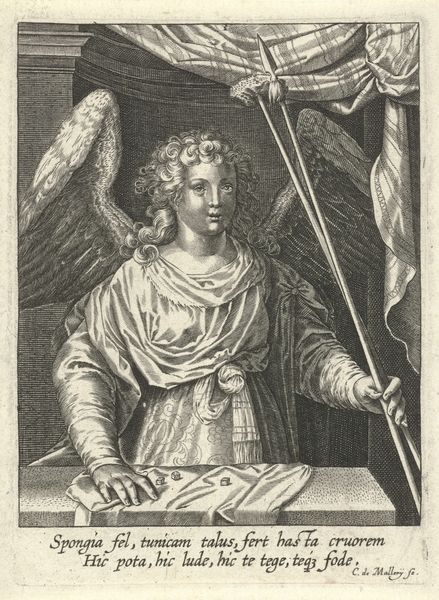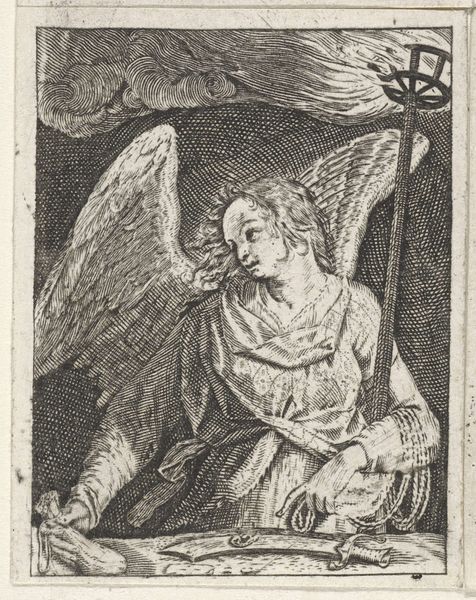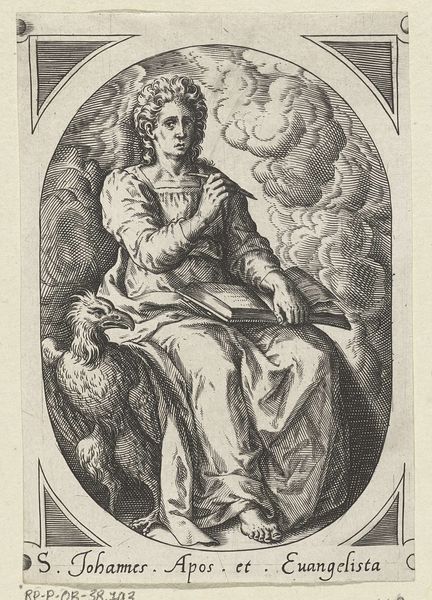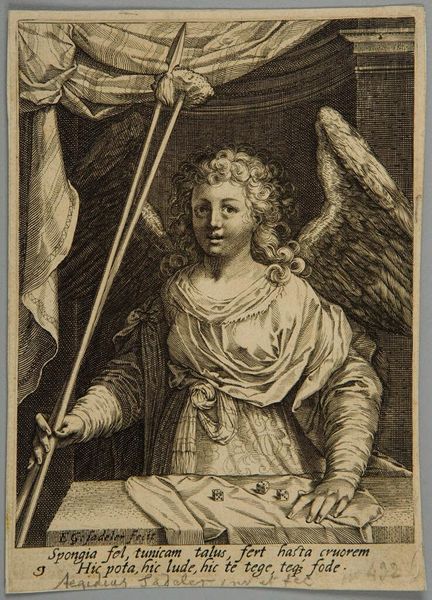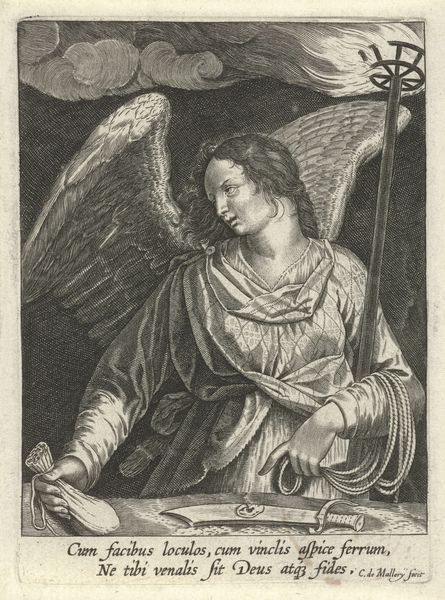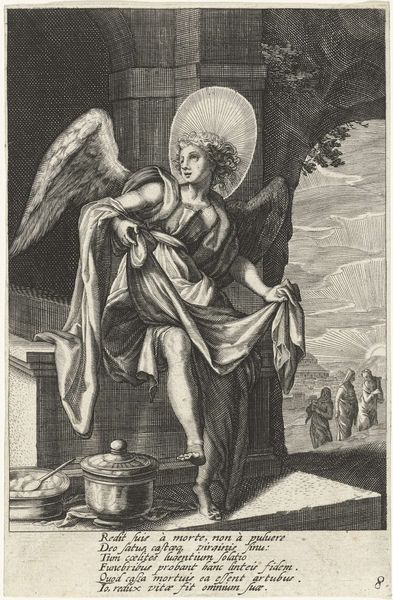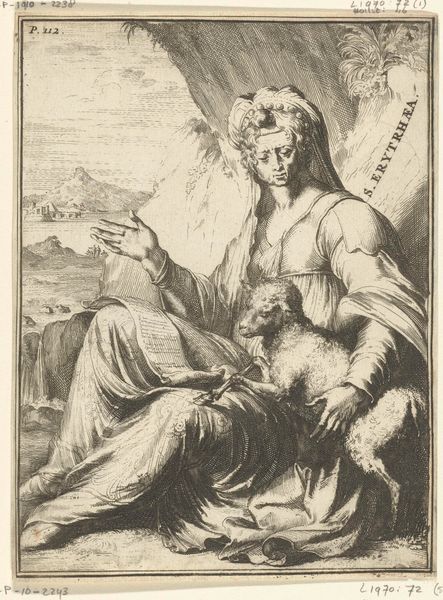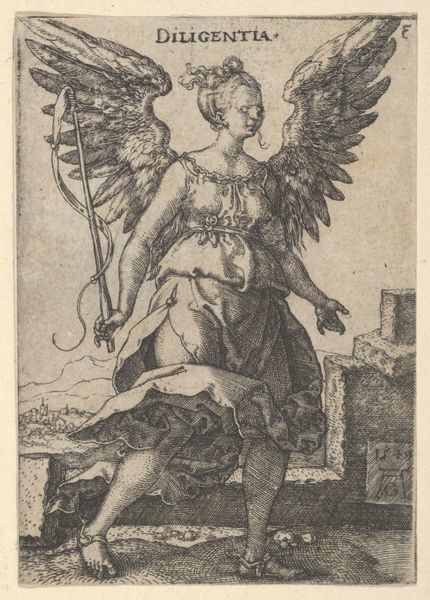
print, engraving
# print
#
figuration
#
history-painting
#
northern-renaissance
#
engraving
Dimensions: height 68 mm, width 53 mm
Copyright: Rijks Museum: Open Domain
Curator: Welcome. Here we have an engraving titled “Engel met de zweetdoek van Veronica,” or "Angel with the Sudarium of Veronica." The piece, likely dating between 1580 and 1600, is attributed to Johann Sadeler I. It is currently held here at the Rijksmuseum. Editor: The overall mood of the piece is serene yet filled with melancholic introspection, wouldn't you say? The angel looks as though they're guarding a precious secret, carefully showing off the sacred relic to the viewer, whilst inviting us to dive into a somber memory of a martyr's suffering. Curator: Precisely. Notice the intricate linework Sadeler employs. It not only defines the form of the angel, the drape of the fabric, and even Christ’s features rendered on the cloth. Note the background. It's filled with dense cross-hatching to create depth and shadow, highlighting the subjects in the foreground. It directs our gaze toward the expressive face of the angel and Christ's suffering—all captured within the confines of this relatively small print. Editor: It’s as though this engraving aims to preserve, capture a sliver of divine narrative through meticulous strokes. The angel's presentation of the sudarium almost transforms the artwork itself into a reliquary. I keep finding myself questioning the very nature of suffering here... It also plays tricks on the imagination, making one wonder what expression Christ would have worn if there hadn't been a camera shy angel between us and him. Curator: The artist's mastery of engraving translates not just physical likeness but emotion. Consider the angel's downcast gaze, the gentle slope of the wings—each element contributes to an atmosphere steeped in reverence and contemplation. In its creation, it makes me consider how its replication and dissemination likely enabled far wider audiences than painted panels might allow access this devotional subject matter in intimate spaces, across geographic boundaries, within the Northern Renaissance world. Editor: As we conclude, I think what’s most amazing to me is how this image manages to bridge earthly suffering and celestial grace within its compact frame. Sadeler, though just the engraver here, almost manages to transcend craft into some form of silent poetry, echoing through centuries, resonating with whispers of compassion, sorrow, and hope. Curator: Yes. Through expert technique and artful composition, we stand now reminded of the Northern Renaissance’s power of religious iconography and the skilled artisans that made this vision manifest.
Comments
No comments
Be the first to comment and join the conversation on the ultimate creative platform.
